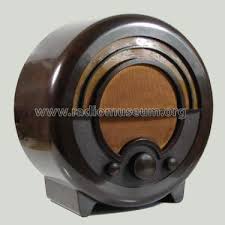Classic radios of the past
Wireless set from the ‘40s-60s, were shackled to a degree performance wise, given that transmitted material was limited to Medium and Long Wave. This gave you an audio bandwidth of about 8kHz which by today’s standards doesn’t give you much to listen to. To make the most from this limitation, set makers designed clever tuner, amplifier sections decent efficient speakers and of course great cabinet designs. Having several old radios in the shop that tend to attract attention, I thought I would show some classic examples.
DAC90A
|
|
|
|
Now this little set was very popular between the late ‘40s and 50s. It had several variations. It was a budget set with a Bakelite case (early form of injected moulding plastic). It was a simply constructed set and was, as was common in those days, AC/DC. This doesn’t have anything to do with the sets split sexual preference, but meant that it could work on any of the different mains supplies that were found in various parts of the country, before the national grid standardised supply. When serviced, these sets work very well and will easily outlive their owner.
The “Round” Ekco
|
|
Mr. E. K.Coles company of Southend-on-Sea (sarfend as the locals would say) Produced lovely sets. To keep costs of case making down, the company invested massively in high pressure Bakelite moulding plant. This enabled them to make cabinets any shape as required. They came up with a range of round shaped sets, ranging from budget types to electronically quite advanced. Some had round dials with hidden illuminated tuning pointers! Anyone who recalls “Til death us do part”, will remember seeing one of these sets on the sideboard behind Alf Garnet.
|
|
Beau Decca
In the ‘40s Decca made some spectacular radiograms, namely the Beau Decca and Decca Deccola. The wooden cabinets housed several loudspeakers who’s sound was channelled around the room via angled flutes. Amplifier sections used big PX4 and PX25 valves and coupled with a revolutionary HiFi pick, the sound quality beat all that was around at the time.
|
|
|
|
Philips “Reverbeo”
Always producing good sets, there were some interesting features. In the late ‘30s-40s and range of sets came out known as “Mono-Knobs”. A mechanical nightmare of cables and pulleys gave the user a single control that when rotated, tuned the set in, when moved side to side changed the tone and moved up and down changed the volume. All well and good ‘til something went wrong. The Philips service manual had a detailed section explaining how the repair man could hang himself halfway through trying to repair one of these sets. By the ‘60s and with the wide coverage of FM/VHF transmission, some really flash sets had been brought out. These had split tuning systems so that you could pre-select your medium wave and VHF stations, stereo amplifiers , twin speakers. If you gave up the family holiday and chopped in your Mk 1 Cortina for a Ford Pop’, you could afford a stereo decoder so that you could listen to the Third Programme In full stereo! For those that didn’t want to do that, there was a variation on one of these sets called “Reverbeo” The set had a spring reverb unit fitted between the stereo speakers, giving a large concert hall sound effect. Actually sounded great. Dolby eat your heart out. Sorry, Mr. Dolby passed away recently.
So there we have it. A quick snapshot of some proper wireless sets. Remember 10% off labour rates, if you can demonstrate you have read this. A small entrance exam will be undertaken. Seth, Zeta Services.



